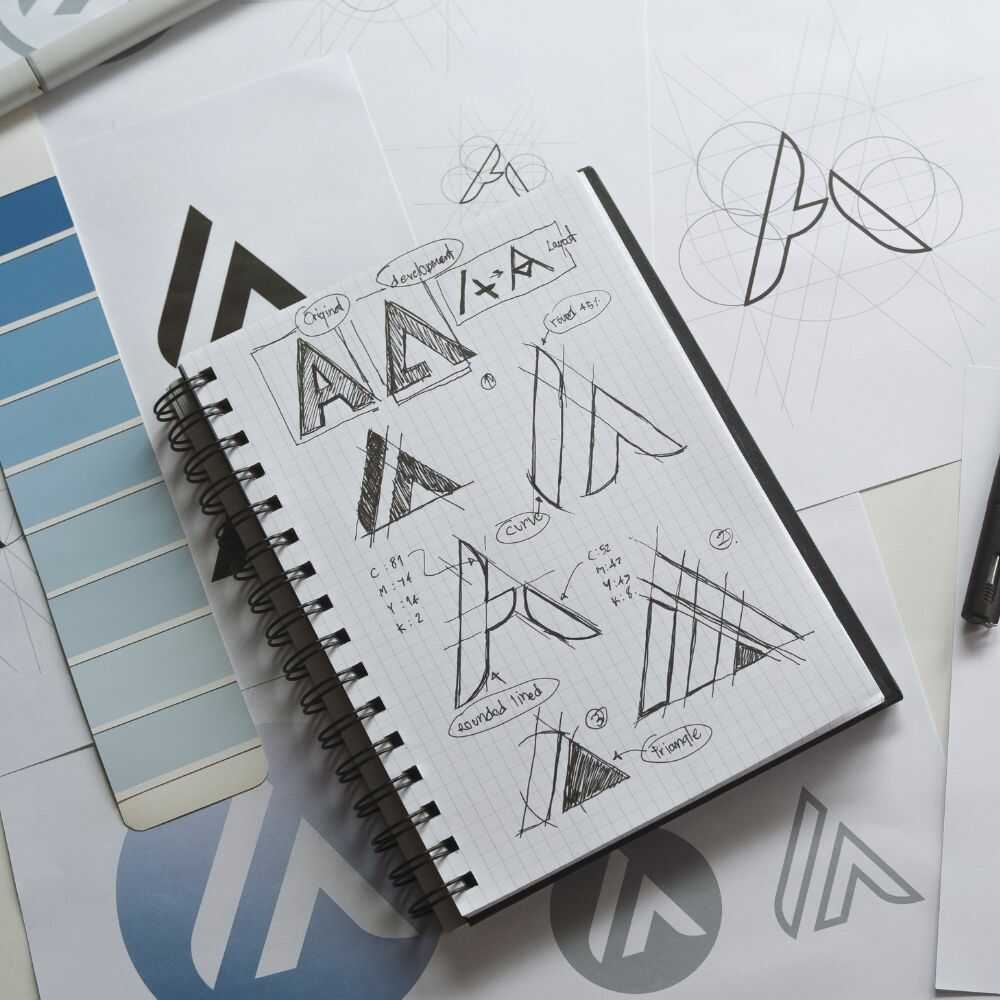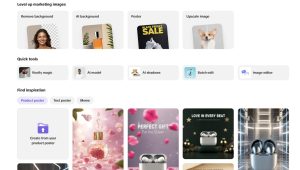Are you considering redesigning your logo? A logo is an essential aspect of any business, as it serves as a visual representation of your brand. A well-designed logo can help you stand out from competitors and attract customers. However, as time passes, your logo may become outdated or no longer accurately reflect your brand’s values and mission. This is where a logo redesign comes in.
A logo redesign involves updating or completely changing your existing logo to better represent your brand. It can be a significant step for your business, and it’s essential to approach it with careful consideration. A successful logo redesign can breathe new life into your brand, while a poorly executed one can have the opposite effect. In this article, we’ll explore the reasons why you might consider a logo redesign, the benefits it can bring, and how to do it right.
Why Redesign Your Logo?
If you’re considering a logo redesign, you’re likely wondering why you should bother. A logo is more than just a visual representation of your brand; it’s a symbol of your company’s identity. Here are a few reasons why you might want to redesign your logo:
Rebranding
One of the most common reasons for a logo redesign is rebranding. If your company has undergone significant changes, such as a merger or acquisition, a new logo can help communicate the new direction of your brand. A logo redesign can help signal to customers that your company is evolving and staying up-to-date with the times.
Outdated Design
If your logo looks like it was created in the ’90s, it might be time for a refresh. An outdated logo can make your brand look old-fashioned and out-of-touch. A modern, well-designed logo can help your company stand out in a crowded marketplace and attract new customers.
Competitive Edge
In today’s competitive business landscape, it’s important to stay ahead of the curve. A logo redesign can give your company a competitive edge by making your brand more memorable and recognizable. A well-designed logo can help your company stand out from competitors and make a lasting impression on customers.
In conclusion, a logo redesign can help your company stay relevant, communicate changes in your brand, and give you a competitive edge in the marketplace. If you’re considering a logo redesign, take the time to carefully consider your options and work with a professional designer to create a logo that accurately represents your brand.
Understanding Your Brand
Before embarking on a logo redesign, it’s important to have a clear understanding of your brand. Your brand is more than just a logo or a tagline. It’s the essence of your business – the way your customers perceive you and the values you stand for. In this section, we’ll explore two key aspects of your brand: brand identity and brand message.
Brand Identity
Your brand identity is the visual representation of your brand. It includes your logo, color scheme, typography, and other design elements that make your brand recognizable. A strong brand identity is essential for building brand recognition and differentiation.
When considering a logo redesign, it’s important to evaluate your current brand identity. Does it accurately reflect your brand values and personality? Is it consistent across all channels and touchpoints? If not, a logo redesign can be an opportunity to refresh your brand identity and ensure it aligns with your brand strategy.
Brand Message
Your brand message is the story you tell about your brand. It includes your brand positioning, messaging, and tone of voice. A strong brand message is essential for building brand awareness and loyalty.
When considering a logo redesign, it’s important to evaluate your current brand message. Does it resonate with your target audience? Is it consistent with your brand identity? If not, a logo redesign can be an opportunity to refine your brand message and ensure it’s aligned with your brand strategy.
In summary, before embarking on a logo redesign, it’s important to have a clear understanding of your brand identity and message. By evaluating these key aspects of your brand, you can ensure that your logo redesign is aligned with your brand strategy and will help you achieve your business goals.
Design Principles
When it comes to redesigning your logo, there are certain design principles that you should keep in mind to ensure that your new logo accurately represents your brand while also being visually appealing and memorable. Here are some key design principles to consider:
Simplicity
One of the most important design principles is simplicity. Your logo should be easy to recognize and remember, and it should be easily scalable to different sizes without losing its impact. A simple logo is also more versatile and can be used in a variety of contexts, from business cards to billboards.
Versatility
Another important design principle is versatility. Your logo should be able to work in a variety of different contexts, from print to digital, and it should be easily adaptable to different color schemes and backgrounds. A versatile logo is also more likely to stand the test of time and remain relevant for years to come.
Relevance
Finally, your logo should be relevant to your brand and the message you want to convey. It should accurately represent your brand’s values and personality, and it should resonate with your target audience. A relevant logo is more likely to be memorable and to create a strong emotional connection with your customers.
By keeping these design principles in mind, you can create a logo that accurately represents your brand while also being visually appealing and memorable. Whether you’re redesigning an existing logo or creating a new one from scratch, these principles can help guide your design process and ensure that you end up with a logo that you and your customers will love.
Redesign Process
Redesigning a logo can be a daunting task, but if done correctly, it can breathe new life into your brand and help you stand out from the competition. Here’s a step-by-step guide to the redesign process to help you get started:
Research
Before you begin sketching ideas, it’s important to research your brand and your competitors. Look at your current logo and identify what works and what doesn’t. Consider your brand values and the message you want to convey. Analyze your competitors’ logos and note what makes them successful or unsuccessful. This research will help you create a logo that is unique, memorable, and relevant.
Sketching Ideas
Once you have a clear understanding of your brand and your competitors, it’s time to start sketching ideas. Don’t worry about creating a perfect design at this stage; focus on generating as many ideas as possible. Use pencil and paper or a digital design tool to sketch out rough concepts. Experiment with different shapes, colors, and typography. Remember to keep your brand values and message in mind as you sketch.
Refinement
After you’ve generated a variety of ideas, it’s time to refine them. Choose the strongest concepts and begin refining them into more polished designs. Experiment with different color palettes and typography options. Consider how your logo will look on different backgrounds and in different sizes. Get feedback from others, and be open to making changes based on their suggestions.
Final Design
Once you’ve refined your concepts, it’s time to choose the final design. Consider how it aligns with your brand values and message, and how it compares to your competitors’ logos. Make sure it’s unique, memorable, and versatile. Test it in different contexts, such as on business cards, websites, and social media profiles. Finally, make sure to protect your new logo by registering it with the appropriate trademark office.
By following this process, you can create a logo that accurately represents your brand and helps you stand out in a crowded marketplace.
Implementation
Now that you have your new logo, it’s time to implement it across all of your brand assets. This includes your website, marketing materials, and social media accounts.
Website
Your website is likely the first place people will encounter your new logo, so it’s important to update it as soon as possible. Here are some steps to follow:
- Update your website’s favicon to match your new logo
- Replace your old logo with the new one in the header of your website
- Update any graphics or images on your website that feature your old logo
- Make sure your new logo is consistent throughout your website, including on any landing pages or subdomains
Marketing Materials
Your marketing materials, such as business cards, brochures, and flyers, are important for promoting your brand and should feature your new logo prominently. Here are some things to keep in mind:
- Update any templates you use for your marketing materials to include your new logo
- Replace your old logo with the new one on any existing materials you have
- Consider printing new materials with your new logo to ensure consistency
Social Media
Your social media accounts are a great way to showcase your new logo to a wider audience. Here are some tips for updating your social media accounts:
- Update your profile picture and cover photo to feature your new logo
- Update any graphics or images on your social media accounts that feature your old logo
- Make sure your new logo is consistent across all of your social media accounts, including any linked accounts
By following these steps, you can ensure that your new logo is implemented consistently across all of your brand assets, helping to strengthen your brand and build recognition among your audience.
Conclusion
Congratulations! You have successfully redesigned your logo. Your new logo should represent your brand in a modern and fresh way, while still maintaining the core values and messaging that your customers have come to know and love.
Remember that a logo redesign is just the beginning. It’s important to update all of your marketing materials, including your website, social media pages, and any physical signage or promotional items. Make sure that your new logo is consistent across all platforms and channels.
Here are a few final tips to keep in mind:
- Keep it simple: A clean, simple design is often the most effective.
- Be consistent: Use your new logo consistently across all platforms and channels.
- Test it out: Get feedback from customers and colleagues to make sure that your new logo is resonating with your target audience.
- Don’t be afraid to make changes: Your logo may evolve over time as your brand grows and changes. Be open to making updates as needed.
With a little bit of creativity and hard work, your new logo can help take your brand to the next level. Good luck!
Barry Edwards is a digital marketing expert with a deep understanding of content strategy, logo, and branding principles. Holding a Bachelor’s degree in Marketing from Beaconhill College, he offers valuable insights on digital marketing trends and strategies through his writing. Follow Barry’s work to stay updated on the latest in online marketing and branding.



